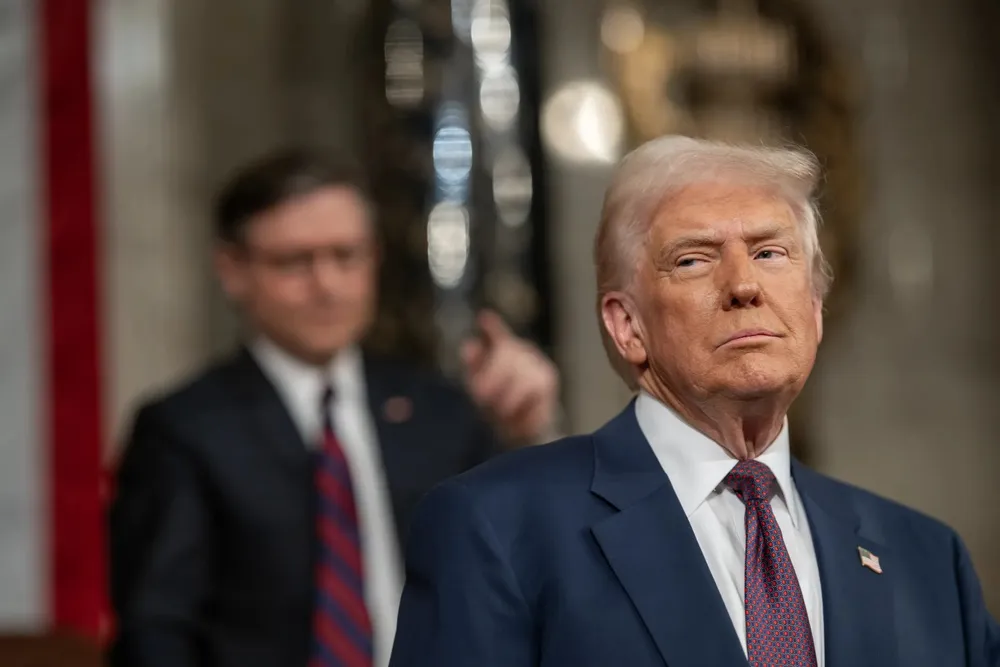Republicans seek middle ground with US clean energy tax credits draft
ANALYSIS | Initial proposal by Congressional revenue committee sets compromise between Trump’s demand for IRA repeal and party moderates’ call to fully preserve incentives

Republicans’ initial effort in Congress to roll back federal clean energy tax credits is a compromise between President Donald Trump’s desire for an immediate repeal and party moderates’ call to preserve them for the full 10 years.
The proposed changes in a draft bill “are broadly in line with our expectations that the tax credits would be phased out earlier than currently written in law, but not repealed immediately,” Brett Castelli, an equity analyst at Morningstar, wrote in a note to clients.
Solar stocks led by First Solar soared on the news Tuesday. “We believe the market speaks more to calming investor fears of a worst-case scenario than the outcome being materially better than expected,” he added.
GE Vernova, the top wind turbine supplier in the US and fellow giant Vestas, also surged even though that sector did not fare as well in the draft. NextEra Energy, the solar and wind market pacesetter here, rose a modest $3/share in early afternoon trading.
The tax credits, available in the Inflation Reduction Act (IRA), are the most generous in the industry’s history. Prior President Joe Biden views the 2022 law, the nation’s most ambitious effort to address climate change, as his signature legislative achievement.
His administration, however, estimated their cost at $369bn, a fraction of $1trn to $2.2trn forecast by private energy analytical firms and money centre banks.
Two main reasons: no cap on their use, in most cases, and the 2032 date for their expiration is pegged to the US lowering power sector emissions to 25% of 2022 levels. As this would be difficult to achieve, the credits could remain in place for numerous additional years, according to some Republicans.
The 389-page bill, which the tax-writing Ways and Means Committee in the House of Representatives is expected to approve later today (Tuesday), would move forward sunset dates for some subsidies, while preserving others.
Tax credits for clean hydrogen production, and purchase of new and used electric vehicles would expire at the end of this year. The exception: end of 2026 for manufacturers that produce less than 200,000 vehicles.
Technology-neutral, zero-emissions clean energy investment and production tax credits, known as Section 48E and Section 45Y, respectively, would begin to phase down in 2029 – 80% of present value, 60% in 2030, 40% in 2031, and go away in 2032.
These cover wind, solar, geothermal, batteries, and certain other clean energy technologies. A separate credit for nuclear energy would also phase down on this timeline.
Importantly, the draft makes it more difficult for projects to qualify for the credits by first placing them “in service,” versus the year they begin construction under the IRA.
Tax incentives for clean energy manufacturing would end in 2027 for wind energy components but continue through 2031 for other clean energy technologies.
Also, set to continue would be tax credits for carbon capture and storage along with direct air capture.
In all cases, the bill places stricter limits on foreign ownership of projects that could potentially qualify for tax credits.
The IRA’s new transferability feature, which allows project sponsors to sell clean energy tax credits to third-party buyers for cash, would phase out at the end of 2027.
The bill is the core of massive tax and spending legislation sought by Trump that includes extending his 2017 tax cuts that expire at the end of this year. It reduced both corporate and individual taxes for most households.
To help reduce the roughly $5trn cost over the next decade, Trump is looking to slash federal spending that includes a large chunk of IRA green funding.
Republicans intend to pass his so-called "big beautiful bill" using the budget reconciliation process that requires a simple majority vote in the House and Senate.
This is what opposition Democrats under Biden did to pass IRA which did not receive a single Republican vote.
Republicans have a 220-213 majority in the House and 53-47 control in the Senate where Vice President JD Vance in his role as Senate president could cast the deciding affirmative vote in the unlikely event the bill is deadlocked 50-50 when brought to the floor.
(Copyright)